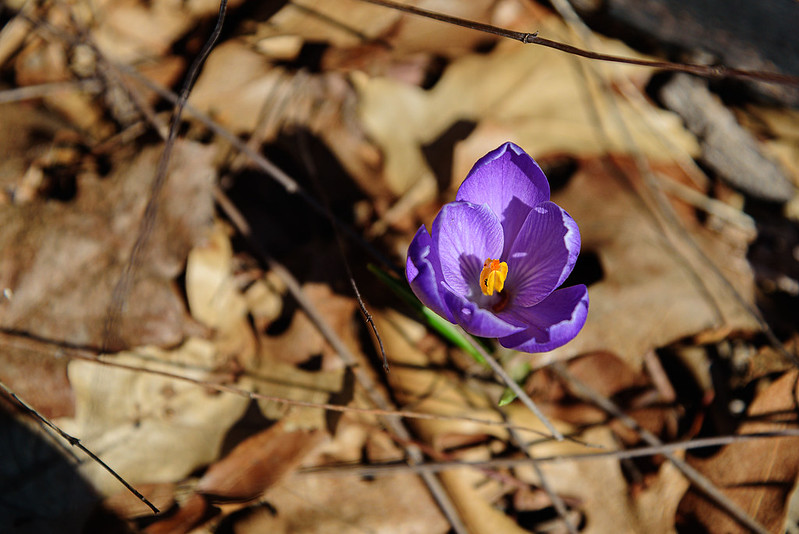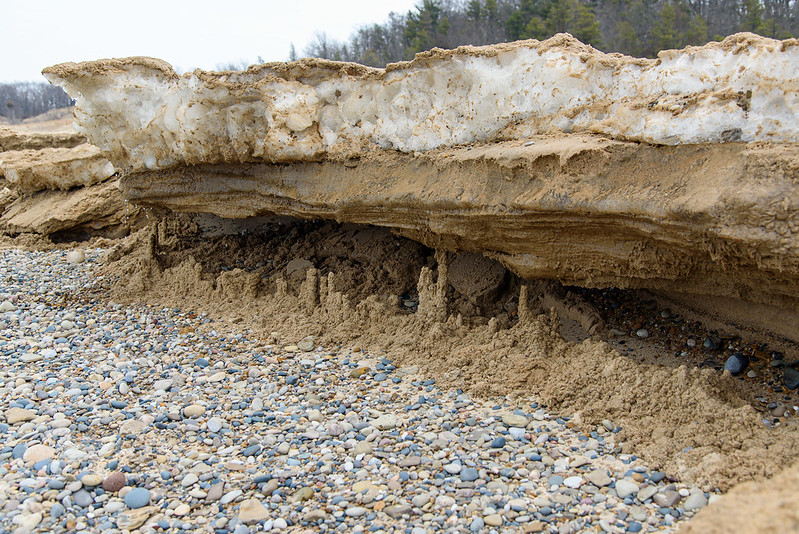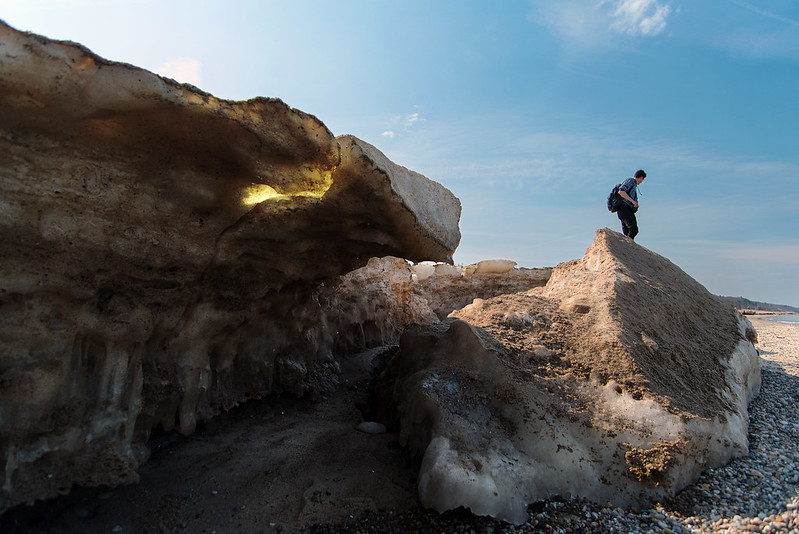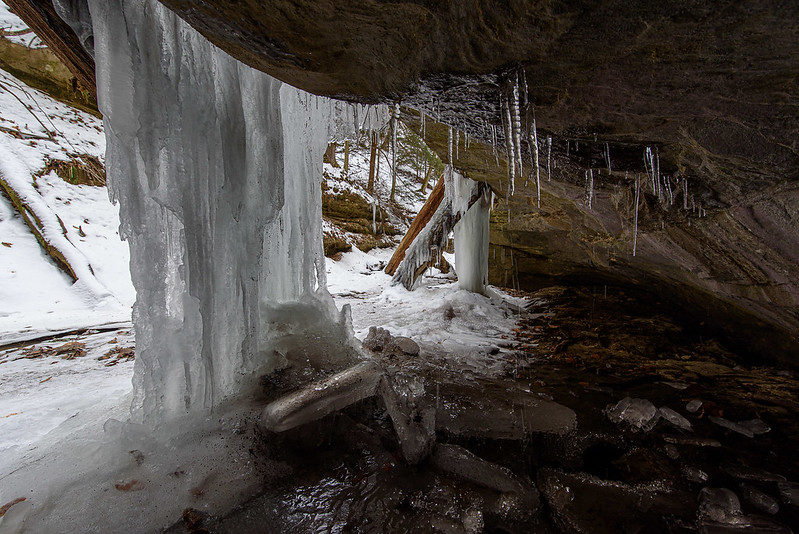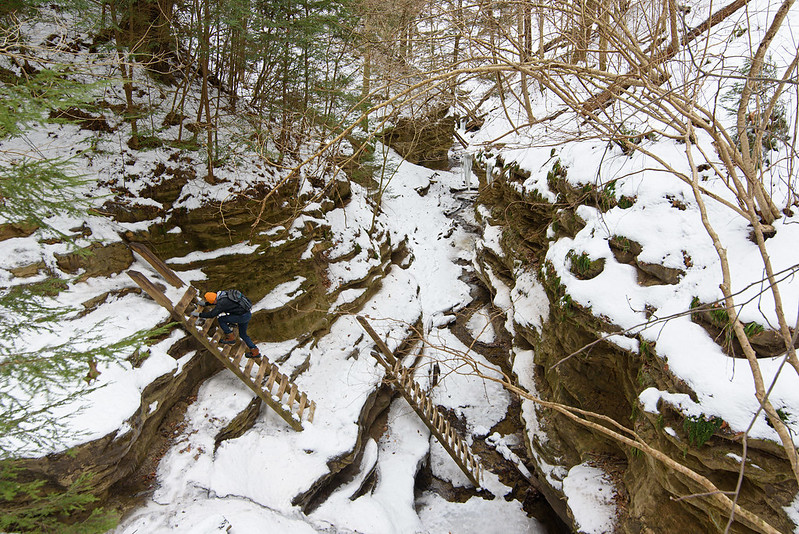




A bit more than halfway from Mattiessen's Cedar Point to Lake Falls is a small but dramatic waterfall cascading into Giant's Bathtub, a small pond on the upper dells. In times of high water, it's a bit difficult to reach without getting wet, but it's generally well worth the trek. If your balance is good, you can stay dry by stepping on rocks, logs, or whatever happens to be in the stream at the moment. This waterfall can be reached from an access upstream as well as downstream, but in both cases, you need to walk through the stream at some point.
The best way to see this waterfall, I think, is from the downstream approach, from Cedar Point. The site reveals itself as you walk up to it, rather than seeing it from the top when you're almost falling over it. Heading to the Lake Falls access, you'll need to walk through the stream at the very top of the waterfall. This can be a bit tricky if the surface is icy or otherwise slippery - one slip and you can end up falling down into the falls, and into Giant's Bathtub. Be prepared to get your shoes wet as you walk through the 6 to 8 inch deep running stream.



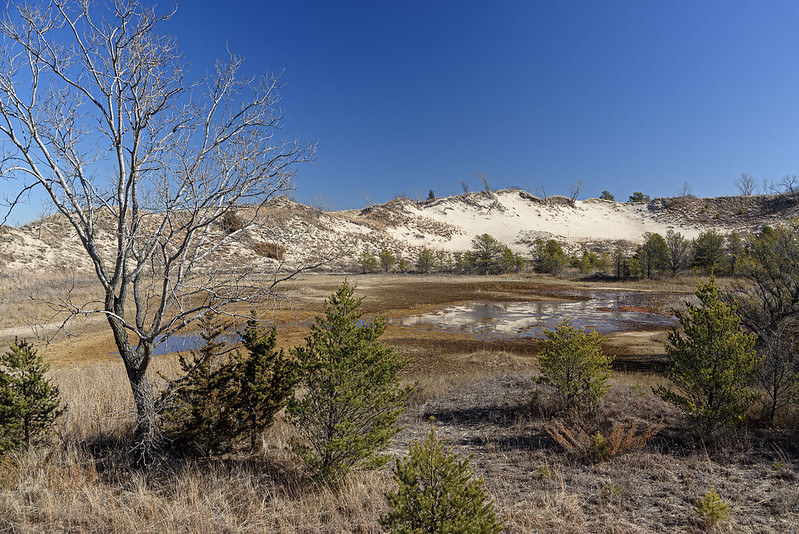
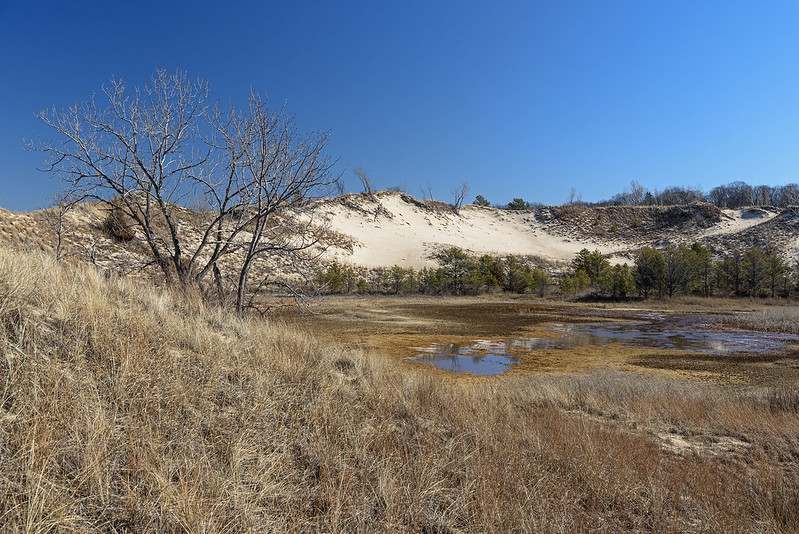
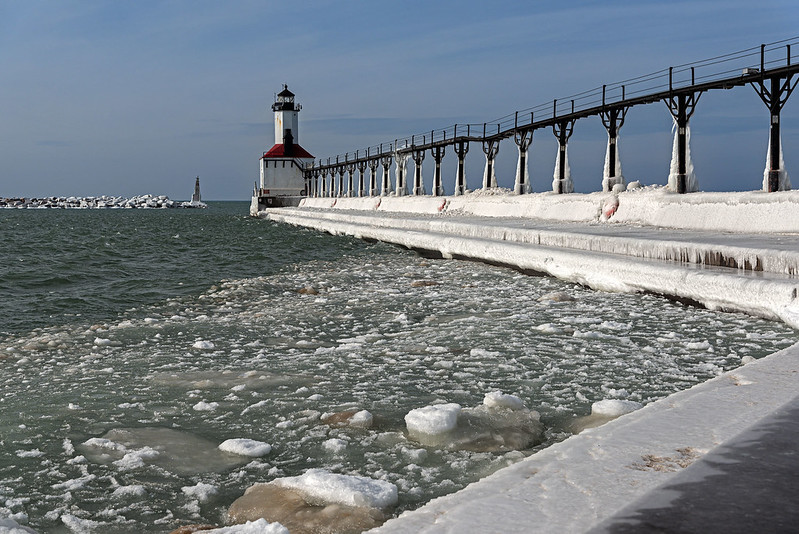
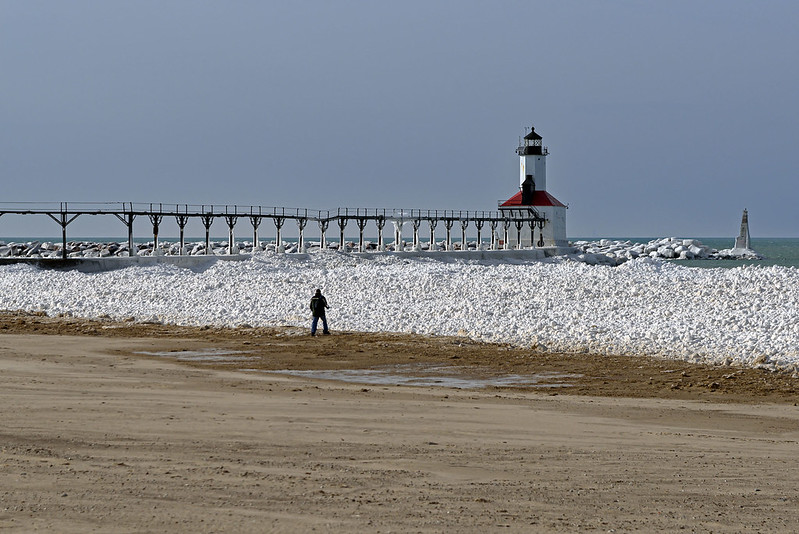
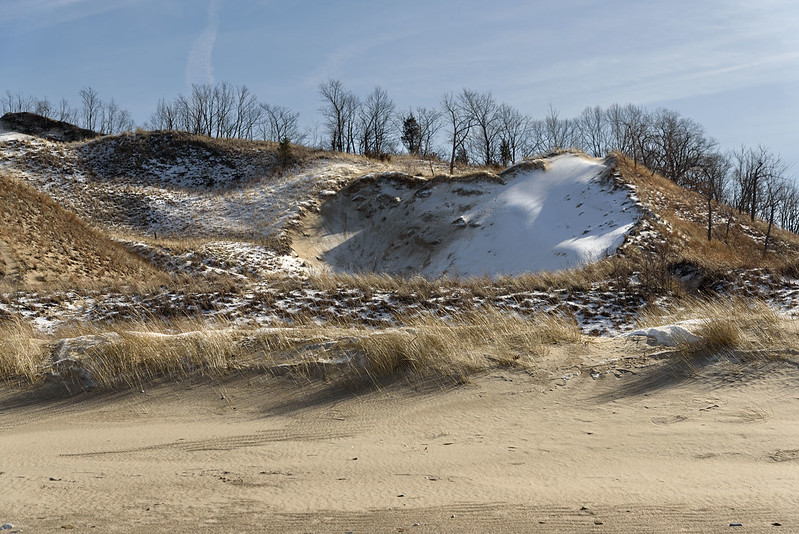
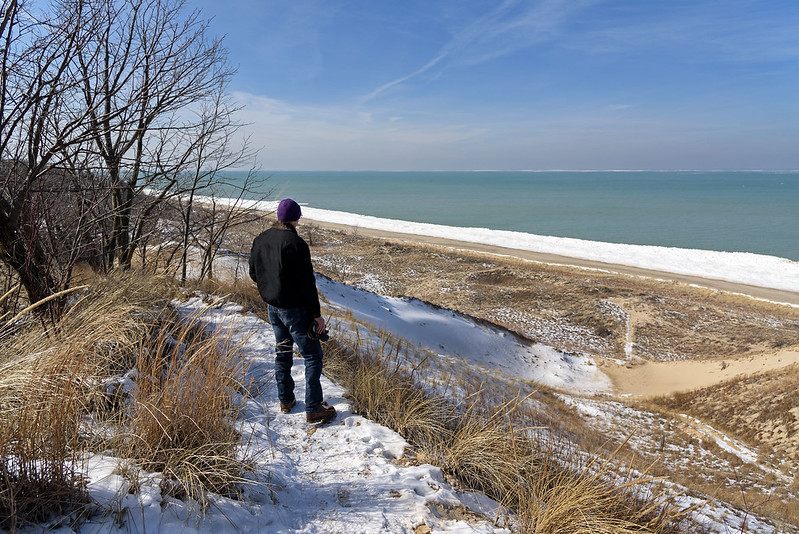

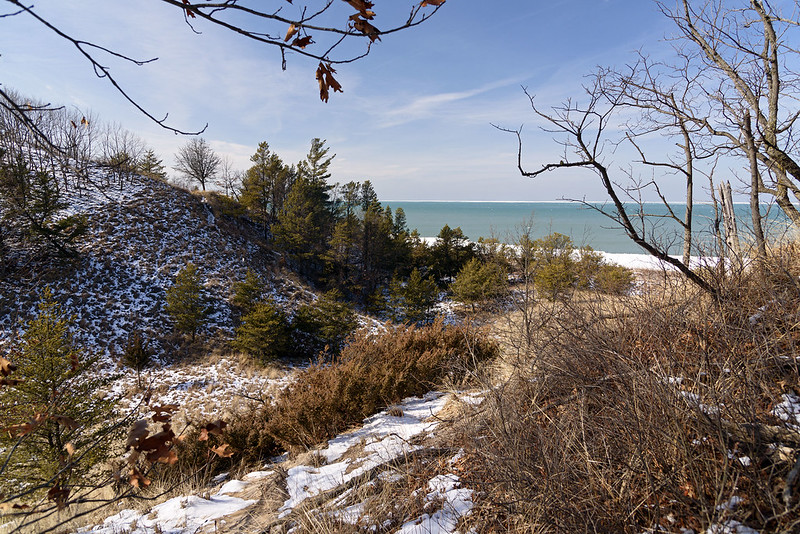



So many weeks of warm weather finally turned cold enough to form ice on the shoreline of Lake Michigan. Unlike most previous winters, the shelf ice only extends a few meters out, and it's only about half a meter in height. Bitter cold temperatures combined with high winds create the "best" shelf ice and mounds on the shoreline. On this day, the ice was being pushed off shore by southern winds. Looking closely at the ice on the lake, you can see it out in the middle of the lake.
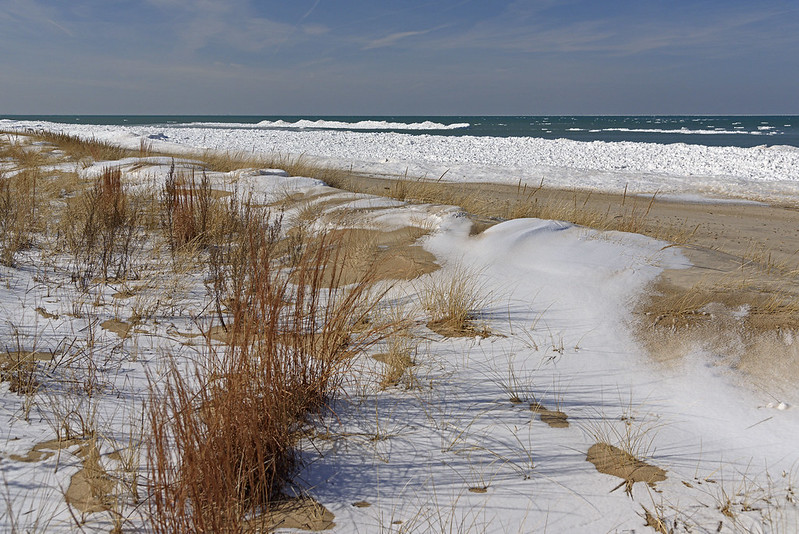
Visitors to the lake in winter often see these tall mounds of ice and figure they're thick and solid enough to walk on. This day proves that shelf ice is not attached to the bottom of the lake - in fact, it's floating with the exception the first few meters where the waves break. Here, it's thick enough to touch the bottom, but that doesn't mean it's safe.
The large mounds of ice seen here now away from the shore, were once attached to the ice near the shore. The winds blowing off shore moved them slowly to their positions now. Imagine, venturing onto these mounds when they suddenly break off and begin floating out!

At the times of high winds, the ice mounds up often 10 or 15 feet tall. In times of low winds, the ice simply forms on the surface of the water. These jumbles of floe ice seen in the image above will form after the mounds and freeze together into this boulder-like texture on the water's surface. Then, if winds come again, mounds will form on the outer side of these flat areas, as the ice builds up. It can often extend 100 meters into the lake. At times, the floe ice covers all of the water that can be seen from shore, perhaps a mile or two out.
